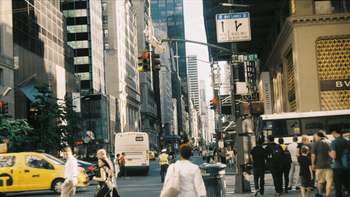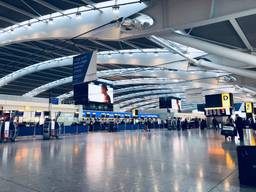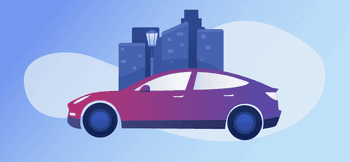It’s been a rough few years for the out-of-home (OOH) industry. According to the Out of Home Advertising Association of America (OAAA), OOH ad spend in the US hit a high of $8.6 billion in 2019 before falling 29% to 6.1 billion in 2020 as a result of pandemic shutdowns.
Are we finally starting to see a comeback? All signs point to yes. The OOH industry began its recovery in 2021 and is expected to continue throughout 2022 as industries bounce back and more consumers return outdoors. According to PlaceIQ’s Social Distance Tracker, foot traffic and consumer enthusiasm is returning following the reemergence patterns we saw in 2021. These patterns included a big increase in foot traffic to social venues like restaurants, stores, bars, and movie theatres.
So what does this mean for OOH? If expert predictions are right, the industry is gearing up for a big rebound that will continue throughout the year and into 2023. Let’s take a look at some of the trends that are helping pave this road to recovery.
Consumer trends for spring and summer 2022
Seasonal Holidays & Events
For many brands, the warmer months come with big selling and revenue opportunities. According to a recent study conducted by the OAAA and The Harris Poll, OOH is driving awareness for seasonal holiday and event gift purchases like Mother’s Day, Father’s Day, graduations, and weddings. Advertisers can capitalize on key spring events by running contextual OOH ads that help influence purchasing decisions for these holidays.
- 55% in cities of 1M+ population find OOH ad messages useful when shopping for these special occasions
- 66% of Millennials in cities of 1M+ population
Commuting
Commuting is on the rise as workers begin their return to the office. The same survey found that 80% of American workers expect to commute through the spring of 2022 – and this number jumps throughout the summer months. Americans are also increasingly comfortable travelling by all forms of transportation, including public transit. Advertisers should use these trends in mobility to target audience segments in high-value venue types with long dwell times, like transit stations or office buildings.
- 80% of American workers expect to commute through the spring of 2022
- 84% expect to commute throughout the summer months
- 58% in cities of 1M+ population feel safe travelling by subway
Travel
Consumers are also looking forward to travelling this spring and summer, creating an opportunity for OOH ads in venues like airports. Brands can take advantage of this by serving ads for vacation-related goods and services.
- 85% of Americans plan to take a vacation this summer
- 48% will take two weeks or more, up from 41% in summer 2021
Automotive
Automotive OOH ads will be prominent throughout the spring and summer as the industry begins to bounce back from supply chain shortages that affected markets throughout 2021. With these issues expected to improve in 2022, many predict that there will be a big boom in automotive advertising – and consumers will be paying attention. Nearly half of the audiences surveyed recalled seeing an OOH ad for an automotive brand, with many engaging with the brand by either visiting the website, sharing information, or visiting a dealership.
- Nearly 4 in 10 Americans recall seeing an automotive OOH ad recently
- Over 43% who viewed an automotive OOH ad took action following exposure
OOH has the spotlight
Today’s internet users are exposed to more ads than ever before, and digital marketers are facing a challenge in getting consumers to notice them. After spending the past two years working, studying, and socializing from behind a screen, many audiences have simply become desensitized to digital ads, oftentimes skipping or ignoring them completely. In fact, the study found that nearly 8/10 of Americans are annoyed by online ads that interrupt their browsing or viewing experiences. There’s also an increasing number of internet users who use ad blockers to stop these interruptions.
42.7% of internet users worldwide use ad-blocking tools at least once a month
27% of American internet users block ads
(Source: Hootsuite)
With digital fatigue and a cookieless future on the horizon, marketers have the opportunity to shift ad spend towards OOH, delivering more relevant and contextual content to audiences. Audiences are being exposed to OOH ads more and more as they travel, commute, and socialize, and 57% of them said they’ve engaged with an OOH ad in some way. Retail, fast food, and food & beverage ads are being noticed the most, with 63% of consumers agreeing that retail ads are the most relevant.
Urban dwellers and younger generations are even noticing OOH at higher levels than pre-pandemic, creating an opportunity for advertisers to connect with these highly desirable audience segments. Brands and shopper marketers should take advantage of this rise in consumer attention by engaging with them through OOH, targeting them with interactive experiences like QR codes to drive brand awareness while creating a positive brand impact for the viewer.
43% of adult consumers say they notice OOH ads more compared to before the pandemic
(Source: OAAA)
More adoption of programmatic DOOH
Programmatic innovations and advancements are also contributing to OOH’s rebound. According to the OAAA, programmatic DOOH is projected to grow by 56% in 2022. PDOOH offers flexibility and agility, allowing advertisers to quickly target audiences based on data triggers like weather, season, special events, and more. Take Mother’s Day for example: a CPG brand can run an OOH campaign across a designated retail area reminding consumers to pick up some of mom’s favourite perfume. Thanks to programmatic, that same brand can quickly serve ads for a different campaign once the holiday is over, like promoting sunscreen for the upcoming summer vacation season.
As more and more marketers incorporate PDOOH into their omnichannel campaigns, we also predict a rise in OOH as part of full-funnel marketing plans. With programmatic, campaigns can quickly be adapted and delivered across both channels through DSPs. Using the same parameters and contextual triggers, advertisers can enable seamless messaging that reaches consumers wherever they are. Advertisers looking to focus on brand-building advertising can leverage PDOOH as part of their omnichannel media mix, allowing them to target large portions of a population in an impactful and less-fragmented way than digital advertising.













